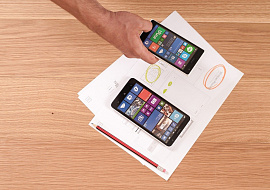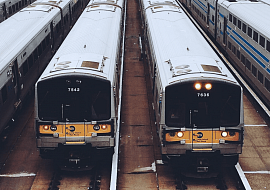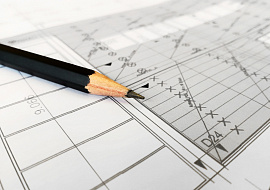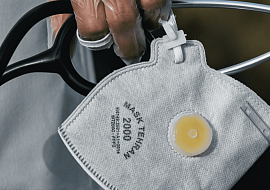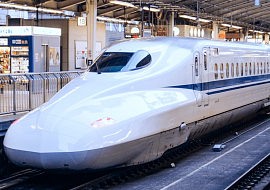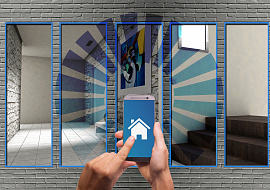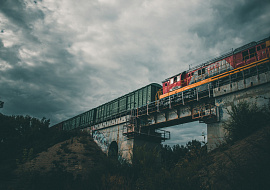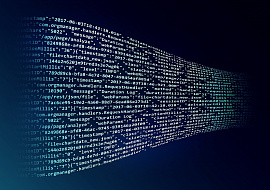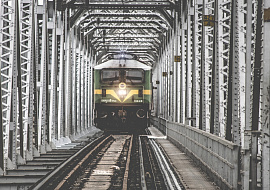Rail Software for Advanced Analytics: How Beneficial Can IoT Be for Transportation Processes?
To be prepared for this future, it is essential to decide on the most high-performance and cost-effective digital solutions for achieving all the mentioned points. In digital solutions for rail, this is a rail software that acts like an analytical center that can provide all the detailed data about what’s going on on the railway from a business perspective. In this article, PSA having worked on digital railroads for 15+ years figures out why the IoT solutions for railway transportation are considered as optimal for improving the business potential of the railroads, and how to adapt existing rail software to the modern digital needs.
The Real Potential of IoT Technology for Railways
According to MarketsandMarkets, by 2023 the global intelligent transport system market will reach $30.7 Billion. In the majority of cases, “intelligent transportation systems” means solutions based on the Internet of Things technologies. Since the basis of any smart system operating with real activities is smart technology for collecting, processing, and analyzing the large amount of data, we should establish an optimal system for getting the data from all the rail components – trains, equipment, passengers, and so on. The ultimate goal – is to build the Internet of Things ecosystem that should consist of the following components:
-
Sensors, actuators, cameras and other hardware to monitor parameters critical for rail transportation. For instance, to measure vibrations or sounds in rail signaling equipment to predict possible failure; or to detect obstacles on the track to remove it on time.
-
Networks to provide reliable communications between all the included assets.
-
Rail software and services to manage the devices with the help of received data flows. Сloud services can receive and process a large amount of data while mobile tools can be used to control the processes. The real benefit companies get is when the data is analyzed through IoT services. Software tailored to the IoT needs is analytically conditioned and contributes to good detection, monitoring, and visualization required for improving rail operations.
The best part is that the list of cases is opened and is driven only by the company’s business goals, and type of transportation. It’s clear that passengers are likely to appreciate the enhancements that increase the transportation comfort while logistic companies are aimed at having more control within the supply chain and building transparent processes. In general, there are some points that the railways can “advertise” to any rail company – enhanced comfort, and improved safety, above all.
Before evolving the rail software with Enterprise IoT solutions, your company should consider the overall business goals. With that alignment, you’ll know what information has to be gathered, how the data has to be analyzed, and how to use the results to improve transportation strategy, get more revenue, and better the passenger experience. We often hear the words “smart train” concept, but companies shouldn’t blindly chase bells and whistles before they’ve estimated the needs. This complex approach will help your company improve commuter rail, subway lines, and long-distance trains.
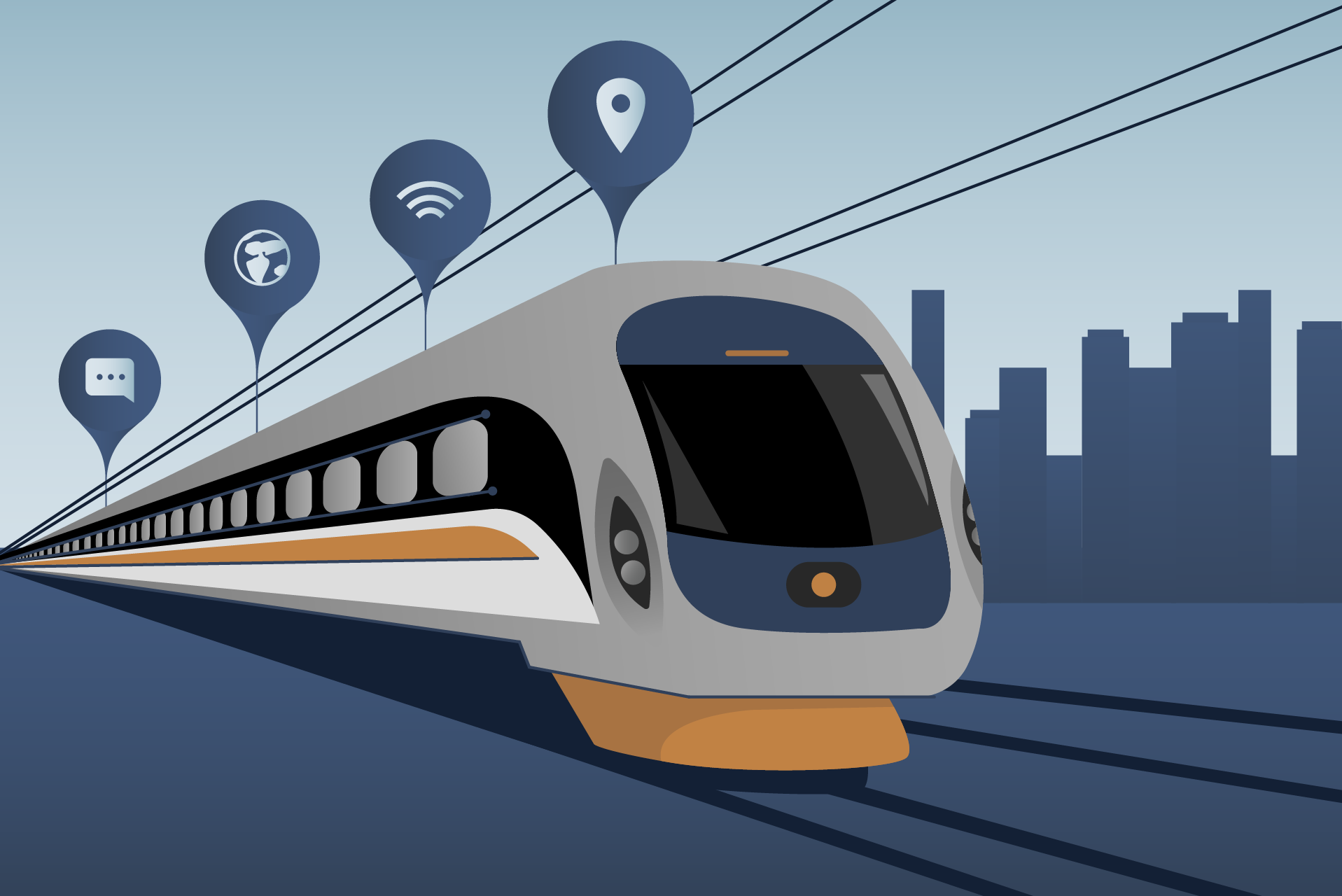
Rail Software for Improving Safety
The smarter the rail system is, the more responsible solutions it can take. And the most important decisions on the track are related precisely to safety, and now we will show how this can be improved.
ADAS – advanced driving assistance system
Signaling systems are responsible for safety on the way by preventing train collisions. But what do you do in the event of sudden danger: a tree fell or some madman decided to test his nerves on the tracks? Here comes the ADAS.
The urgent challenge here is to monitor the environment for identifying obstacles on the track and nearby. Unfortunately, some independent conditions exist, such as falling rocks, trees, or human presence. This is where IoT can leverage its real potential. By using cameras to capture images behind the train and a machine vision system to analyze them, the IoT system can identify foreign objects on the track and send information to the operator, or to the smart train directly to begin its stop. Another option is to equip the track with specific sensors to identify atypical changes in track stress, the appearance of vibrations, or some foreign presence by measuring distance or approach. This method considers in-time changes to the obstacle immediately and removes it without interrupting the transportation process.
IoT-based maintenance
One of the most common ways to save money on maintenance in principle is to organize it on the basis of IoT. The reason is simple, more precisely, there are 3 of them:
-
Allows real-time accounting
-
Avoids breakdown by predicting it
-
Savings both on labor cost and due to delays.
The delays for example occur due to the fault-tolerant nature of the system, that is, due to safety. But in fact, this is not a breakdown predicted in time. Since rail signaling systems are designed to be fail-safe, they can provoke failures even if nothing goes wrong. Essentially, failures are quite costly: in 2018, train delays cost AmTrak $42 million. These occurrences happen frequently and can worsen passenger experience. However, these numbers can also be decreased with predictive maintenance and real-time monitoring of rail assets through the Internet of Things devices. The rail software can issue commands to centers or directly to technical teams to check equipment.
By installing IoT sensors into signaling equipment, tracks, interlockings, traffic lights, and crossings, it is possible to measure various parameters and organize continuous monitoring of all the assets. Thus, operators can see any deviations from the norms in real-time. Having information that some equipment or component might fail soon makes it easier to manage technical staff and direct them to maintain the equipment when it is required. The good news is almost half of the tracks in the UK are already equipped with sensors ensuring distance control. However, rail software can organize the analysis of all the gathered data for making more accurate predictions on the equipment status and time of maintenance.
Rail software for environmental monitoring
Environmental pollution is a distant, but still critical prospect for rail. Although rail transport is now the most environmentally friendly and emits 7-11 times fewer GHGs per passenger-mile traveled than cars and airplanes, there is still room for improvement. Traditional trains emit particulate matter in the air which can endanger the health of people with trouble breathing. Particles smaller than 2.5 micrometers pose the greatest risk to health. Therefore, rail companies should closely monitor particles, which is also convenient to do through Enterprise IoT solutions. Particle measuring devices is a great example that we’ve worked with here at PSA, that can be implemented right into the IoT ecosystem.
Need Help?
How Passengers Are Benefiting from Improved Rail Software
Passengers have their own expectations of rail travel, especially when it comes to digital railroads. So, rail companies should satisfy these expectations if they want people to choose rail as their mode of travel. Many train operators are now offering scheduling information, ticketing, and other services through mobile devices. For the rail investments to pay off, it has to be high passenger throughput first. To optimize the station’s work, rail companies have to analyze a large amount of passenger traffic data, which is also convenient to do through Enterprise IoT solutions that are integrated with other mobility solutions. And it happens. As we can see, the rail sector realizes that if it wants to be competitive, it is necessary to make improvements. Above all, comfort relates to passengers’ experience during travel and includes environmental conditions inside the train, as well as services.
Train conditions
Rail software processes all the available environmental data to set the optimal temperature, humidity, and light conditions better than alternative solutions. By equipping all the fans, heaters, humidifiers, and lamps with sensors that transfer data to the control panel, and actuators to provide intelligent reactions, the system can immediately react to a little change in the environment and set new optimal conditions. This also shows if something fails, and sends the responsible person to fix it. By monitoring conditions on the passenger stations, companies might know how to motivate people to spend more time there and use its services. When it comes to long-distance travel, bathroom conditions can also significantly influence passenger experience. Enterprise IoT solutions here can also provide continuous monitoring of bathroom status and get the cleaning when it is needed.
Surely, it is widespread to use innovative technologies for transportation services, such as information systems, or integrated ticketing. All these can be improved through IoT tools. For instance, passengers can get all the info about their travel in the application, including timetable changes, delays, station closes, and so on. Thus, they can know about issues before they arrive at the station. Also, by learning more about passengers' behavior, and their congestion, rail companies can optimize transportation processes, schedules, intervals between trains, express routes, and so on. Operators are allowed to know each individual rider, having the information on how far they go, or how they like the travel. Passengers also can get all necessary travel details on the mobile application down to the number of passengers on a train.
Another critical condition of passengers' comfort is the speed of a train. However, when implementing a high-speed train, the stress on the brakes and wheels increases, which requires monitoring them very thoroughly. As we mentioned, IoT-based predictive maintenance is the optimal way to accomplish it.
Avoid overcrowding
Enterprise IoT solutions can be utilized for controlling passenger traffic with the help of video analytics tools and sensors implemented all over the station. For instance, when the camera catches a crowd, it can send a signal to the operator, and then they can reroute the crowd, open additional turnstiles, or deploy additional trains. An IoT ecosystem with an improved machine vision system and AI analytical tools can carry out these actions without an operator.
Data about passenger traffic that is collected through IoT tools can then be analyzed to identify the most loaded stations, routes, and patterns of passenger behavior without making operators check hours of video records. Also, IoT-based monitoring in real-time can help to detect issues and conflicts, and eliminate them before they become critical.
Wrapping up
Rail software that is adapted to use with IoT is not only a cherry on top that can promote global railway digitalization but a way of increasing the capital of rail companies and agencies. The implementation of IoT for Railways is a peculiar preparation of the city environment for the new technological era. Being connected to the Internet, smart trains are highly prepared to become a part of a smart city and provide all the necessary information about schedules and traffic to the city’s IoT ecosystem. For seamless integration of Rail software within EIoT projects, companies should know the following:
-
Enterprise IoT solutions help to get detailed info on how to improve the rail transportation processes;
-
While developing the IoT implementation strategy, stay in strict accordance with the company’s business needs;
-
Driving assistance systems, IoT-based predictive maintenance, and environmental monitoring can significantly improve the safety of transportation;
-
By gathering info about passengers’ behavior, companies can optimize schedules, passenger traffic, train frequency, and so on;
-
By having detailed info on what's going on within the train, it is easy to set optimal environmental conditions.
When choosing a company to implement IoT for Railways, consider firms that specialize in Software and Hardware development for rail, not only in general Enterprise IoT solutions. PSA has been working at the junction of IoT and Rail technologies for more than 10 years, and is pleased to assist with your rail project.







